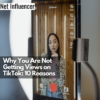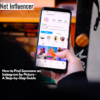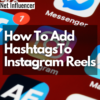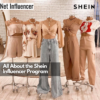Technology
Hopper HQ: Connecting Creator Trends And Brand Stability
Creators chase viral trends through algorithm-friendly formats that can generate millions of views regardless of follower count.
However, Mike Bandar, who co-founded Hopper HQ in London in 2014, believes that established brands should remain tethered to consistency and long-term identity building rather than pivoting to the latest social trend and risking their market position.
“The big flip has been from follower-based into algorithm-based content. Influencers have jumped on this, but brands haven’t fully adopted it, and I don’t believe they fully will and perhaps shouldn’t,” says Mike.
This widening gap between creator agility and brand stability has created an operational challenge for both sides—and a strategic opportunity for Hopper HQ, which started as a planning and scheduling tool that could automatically post to Instagram.
The solution, according to Mike, lies in a hybrid approach: “The strategy that brands are having to adopt is that they leverage influencers and creators to gain reach utilizing content trends, but they still have to have the same strategy of audience building, of brand building, of having a consistent presence on their owned accounts.”
This insight has directly shaped Hopper HQ’s product development. The platform now supports multiple social networks, including Instagram, Facebook, TikTok, X, LinkedIn, Pinterest, BlueSky, and YouTube, with features designed to address the distinct needs of both creators and brands.
Building Tools for Both Creators and Brands
For brands focused on consistency, Hopper HQ offers planning tools like grid visualization and calendar views.
“We still need to be planning our grid, we still need to have our link in bio tools, we still need to have very clear and consistent content planning and strategy,” Mike emphasizes.
At the same time, the platform supports the needs of creators through features that streamline the posting of trending formats, bulk creation capabilities, and automated image optimization.
“Whether you’re bulk uploading images and videos to build out your posts or using CSV files to swiftly create fully fledged posts, Hopper HQ offers powerful bulk uploading features to help you efficiently plan and manage your posts,” Mike explains.
A central feature is the recently launched Strategy Planner, which connects social accounts. With “one click, Hopper will ingest all of your content, see what works, how you talk, and what platforms you use, and it will actually automatically generate a multi-channel strategy.”
The tool provides recommendations for content types, messaging approaches, and a monthly view to guide content creation.
Priced at $19 monthly for a “brand” (one account on each supported platform), Hopper HQ positions itself as accessible to both independent creators and small to medium businesses.
The Advantage of Being Bootstrapped
Unlike many creator economy startups, Hopper HQ chose to bootstrap rather than pursue venture capital funding.
“We’ve never raised massive funding. We’ve never done the VC route, which has meant that we’ve had to be very focused in terms of building for customers and being very intentional,” Mike explains.
According to him, this approach proved valuable when Instagram opened its publishing API to all scheduling tools in 2015, threatening Hopper HQ’s initial competitive advantage as the only automated posting solution.
“We found out that basically all of our competitors were going to get the same utility, which had been our USP,” Mike recalls. “It was a moment of uncertainty because we’re like, at the time, customers mainly paid us because we can post automatically to Instagram, and everyone will go off to these other platforms.”
Instead of panicking, the team doubled down on understanding their users’ workflows. The result was growth despite increased competition.
“Hopper is known for being easy to use and for being not complex or bloated. So it’s powerful without being complex,” Mike notes, adding that this focus on simplicity and alignment with user workflows became their true differentiator beyond any single technical capability.
From Scheduling Tool to Strategic Partner
As platforms increase in number and content formats multiply, Mike emphasizes that the administrative burden has also grown.
What began as a simple scheduling tool has developed into a solution that aims to reduce that burden across the entire content workflow.
The Strategy Planner exemplifies this shift from tactical scheduling to strategic support. It automatically analyzes account performance and generates content recommendations based on what’s worked historically.
“You can essentially say, ‘Okay, these are the weeks’ worth of content I need to do. Let me create that.’ And it will generate your draft posts,” Mike explains.
This strategic element is complemented by practical features like time settings that automatically identify optimal posting times for different platforms.
“Quite often, there are specific good times to post for different accounts,” Mike notes. These features free up creators and brands to focus on content quality rather than logistics.
Human Creativity and AI
With the rise of AI, Mike maintains a thoughtful perspective on its role. “Over the next year, we’re going to see a massive increase of much better AI-generated content,” he predicts. “I think that’s going to be a negative for social media because the eyeballs on that will be less effective.”
Rather than replacing human creativity, Hopper HQ uses AI to handle administrative aspects while preserving the human element in content creation.
As Mike points out, this approach aligns with what audiences ultimately want: “The more that we over-index on a particular type of content or a trend, the more we ultimately crave real engagement and real personality.”
This insight informs Hopper HQ’s development philosophy: “People shouldn’t sell themselves out by doing more lower-quality content. I think the brands that win will be the brands that stay high-quality and consistent, and that’s what tools like Hopper can support.”
Real Results
This strategic balance between trend-driven content and brand consistency is evident in how brands like Tatti Lashes approach social media. Hopper HQ has helped the brand, which has 630,000 Instagram followers, maintain consistency while collaborating with creators.
“They don’t post a huge amount, but what they do is they post very consistently. They have obviously a very clear aesthetic, and they collaborate with lots of people,” Mike observes.
When audiences visit the Tatti Lashes profile, “you can see the clear, consistent aesthetic. If you come to this account or see any of that stuff, you know you’re on it.”
This example illustrates the hybrid approach many successful brands now employ: maintaining brand consistency through their owned channels while leveraging creator partnerships for trend-driven content. Hopper HQ facilitates both sides of this equation.
Social Media Management
Mike aims to position Hopper HQ as more than a scheduling utility. “We want Hopper to continue to become like the social media ‘mentor’ you want,” he explains. “We want it to be your sparring partner for getting more from your audiences and pushing more value to your followers.”
This vision builds on Mike’s broader mission of enabling entrepreneurship, a passion he pursues not only through Hopper HQ but also as a Teaching Fellow in Entrepreneurship at University College London and through Waybook.com, which supports business owners systemise and scale.
For the broader creator economy, Hopper HQ offers a strategic approach that acknowledges the distinct needs of both creators and brands while building tools that serve both.
As Mike concludes, “I just love for them to try it out and see if Hopper can help them stay in their zone of creativity for longer than others.”





















